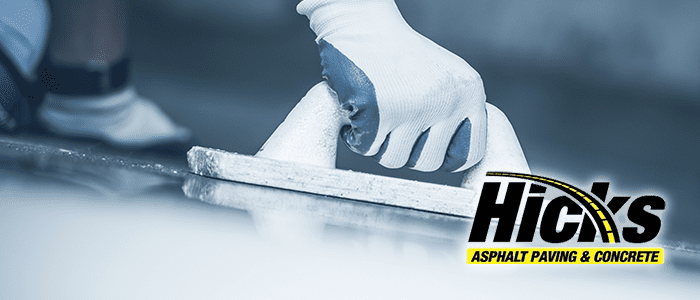In the asphalt, paving, and concrete business, we meet people from all walks of life. The people we come across have different backgrounds and different experiences. Yet one common thread among them is that they, and maybe you too, believe certain concrete myths. But many times, when we talk to people, we are able to dispel some of these misconceptions and wrong ideas they have about concrete and what it can do. So, today we are taking a look at some of these concrete myths and correcting them for you.
Myth 1: Concrete is impermeable.
There are many people who believe that concrete is absolutely solid, and nothing can pass through it. But that is sadly untrue. Concrete is actually quite porous. This means that water and other liquids can still penetrate the surface. Some concretes are more dense than others, but even the densest forms of concrete still allow water and certain other substances to seep into the pores. This is why it is so important to hire a quality paving company with many years of experience. They will be able to talk to you about getting the right mixture ratios in your concrete to reduce permeability and discuss options like sealants to preserve your concrete.
Myth 2: Concrete and Cement are the same thing.
This one is common, and the words are often used interchangeably. However, cement is only one ingredient within concrete. Cement on its own cannot do what concrete does. Cement needs water, binders such as sand or crushed gravel, adhesive, and more in order to become concrete.
Myth 3: Concrete can only be white or grey in color.
Concrete on its own is definitely whitish grey in color. And to save money, many people stick with that color, so it is the most prevalent color that many people see. However, it is far from the only option. Concrete can be painted, stained, or even blended with minerals while pouring to give it any range of color desired. The options for colors and patterns and textures are unlimited. Concrete is far more versatile than many people give it credit for. If you have a vision for the concrete in or around your home, speak to a professional from Hicks APC to find out all your options.
Myth 4: Pouring concrete yourself is easy.
In the age of the internet and DIY, there are countless video tutorials online to show you how to pour concrete yourself. These videos will give you step by step instructions on how to set up, mix, pour, and cure the concrete. But what they cannot do is tell you how the variables in your environment, soil, surroundings, weather, and other things can affect the results of your concrete pour. There are a host of factors that need to be considered when pouring concrete, so for best results it is crucial that you seek out the help of professionals who can ensure that the job is done correctly and in a timely fashion. This will save you both time and money in the long run.





